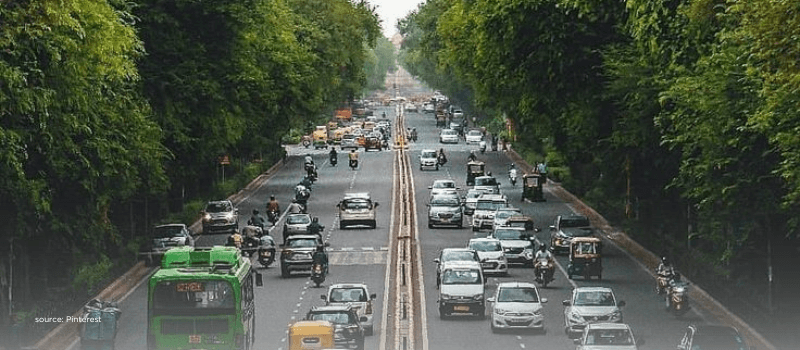

India’s consumer economy is no longer just an urban story. While metros have long driven premium demand, the next leg of the consumption story is coming from India’s small towns and rural heartland. Powered by rising incomes, digital access, and aspirational awareness, “Bharat” is emerging as the most dynamic frontier of Indian consumption.
From fast-moving consumer goods (FMCG) to e-commerce, mobility, and fintech, companies are witnessing a decisive shift in volume growth towards Tier-II, Tier-III, and rural markets. What was once seen as a price-sensitive, underpenetrated region is now a fast-modernizing ecosystem which is digitally connected, economically active, and culturally aligned with mainstream trends. For investors, founders, and brands alike, understanding and unlocking Bharat is now imperative as this is where the next wave of consumers will be won.
In recent quarters, rural consumption growth has outpaced urban by a significant margin. During Q3 2024, rural demand (especially for daily goods) grew twice as fast as urban demand – FMCG volumes were up 6% in rural vs. 2.8% in urban areas. Market researchers (NielsenIQ) confirm that rural FMCG growth has outstripped urban growth for several consecutive quarters.
This rural resurgence is attributed to improved agricultural incomes (aided by good monsoons and crop prices), government support programs, and diversification into non-farm incomes. Schemes such as PM-KISAN, rural road and housing development, and increased MGNREGA allocation have bolstered income certainty and household liquidity in Tier-III and rural regions. These transfers, alongside rising remittance inflows from rural-to-urban migration, are helping convert economic security into consumption.
In contrast, urban middle-class families were squeezed by higher food and fuel inflation in 2023–24, dampening spending in some mass-market categories. The net effect is a narrowing of the urban-rural consumption gap: the latest national survey shows the average rural household’s monthly per-capita consumption is now ₹4,122 vs. ₹6,996 urban (roughly a 70% gap, down from 84% a decade ago), and consumption inequality measures have improved in both rural and urban areas.
Economists see this trend as structurally positive and as evidence of India’s rising “consumption floor.” The fact that rural India is not just surviving but contributing meaningfully to overall demand indicates a deeper socio-economic shift: rural India is now aspirational, connected, and commercially engaged.
Crucially, beyond the metros, hundreds of millions of new consumers are now entering the market, aided by connectivity and aspirational awareness. The e-commerce revolution is no longer confined to big cities: three in five new shoppers since 2020 have come from cities designated Tier-III or smaller. Platforms like Amazon and Flipkart report that a majority of their new customer additions and sales growth are now from semi-urban and rural pin codes.
Similarly, 60% of new e-commerce sellers since 2021 are based in Tier-II or smaller cities, indicating a broadening entrepreneurial base serving these markets. This trend signals a “two-way” digital economy where not only are small-town consumers buying more online, but small-town entrepreneurs and micro-retailers are also building businesses through these platforms. These seller cohorts are increasingly leveraging vernacular onboarding tools, AI-powered inventory recommendations, and digital lending options from marketplaces to scale operations across districts.
Rural consumers are also increasingly digitally connected (thanks to affordable smartphones and data) and are displaying similar buying patterns to urbanites – for instance, on social media and video apps, rural users follow the same fashion or beauty trends, creating demand for those products locally.
Several startup success stories illustrate the “Bharat” opportunity. Meesho, a social commerce platform targeting non-metro consumers with low-cost goods, became a unicorn by enabling thousands of housewives and small-town youth to sell products on WhatsApp and Facebook. Meesho’s growth was fueled by the appetite for affordable fashion and home goods in Tier-II/III cities, and it attracted large VC rounds (e.g. $570M in 2021) including from SoftBank.
In fintech, rural-focused players like SarvaGram (rural loans) and agri-tech commerce platforms like DeHaat have raised sizable investments, recognizing the latent demand in villages for credit and farm-to-market connectivity. Investors are increasingly focused on “Bharat-native” businesses, specifically those that solve for local distribution, pricing, and usage behaviors. Funds are actively backing embedded finance, rural fintech, and regional commerce to tap into underserved yet high-intent consumer pools.
Even in mobility and two-wheelers, demand is now “particularly strong in rural areas, where consumer sentiment remains robust” – a stark contrast to plateauing car sales in some urban markets. With improved rural road connectivity and financing access, vehicle ownership has become increasingly aspirational, even for electric scooters and motorcycles.
FMCG majors from Hindustan Unilever to Dabur are expanding distribution in India’s villages, often leveraging tech (like eB2B apps) to reach remote retailers. Unilever’s Project Shakti and ITC’s e-Choupal were early experiments in rural engagement, but today’s push is more digital and granular. Companies are using GPS-based route planning, WhatsApp ordering systems, and last-mile delivery startups to penetrate even the smallest population clusters.
For private investors, the message is clear: the next 500 million consumers will come primarily from outside the top metros. Companies that crack the code of serving these value-conscious but aspiring customers through localized products, vernacular marketing, and efficient last-mile delivery stand to gain tremendously.
Already, brands that offer price-pack innovations, sachet formats, or regional customization are outperforming in rural markets. Additionally, media planners are allocating higher budgets to regional influencers, local TV channels, and audio platforms to build deeper trust and visibility among non-metro consumers.
The strong rural demand also offers downside protection to consumer businesses, diversifying growth beyond a few metro-centric pockets. This geographic hedge is increasingly relevant in an uncertain macro environment where urban sentiment can swing with fuel prices or EMI rates. Rural India’s steady demand for essentials, and growing participation in discretionary categories, provides a valuable buffer for brands and platforms alike.
TERMS OF USE
Thank you for your interest in our Website at https://unlistedintel.com/. Your use of this Website, including the content, materials and information available on or through this Website (together, the “Materials”), is governed by these Terms of Use (these “Terms”). By using this Website, you acknowledge that you have read and agree to these Terms.
NO OFFER, SOLICITATION OR ADVICE
Our site is provided for informational purposes only. It does not constitute to constitute (i) an offer, or solicitation of an offer, to
purchase or sell any security, other assets, or service, (ii) investment, legal, business, or tax advice, or an offer to provide such advice or (iii) a basis for making any investment decision.
The Materials are provided for informational purposes and have been prepared by Oister Global for informational purposes to acquaint existing and prospective underlying funds, entrepreneurs, and other company founders with Oister Global's recent and historical investment activities.
Please note that any investments or portfolio companies referenced in the Materials are illustrative and do not reflect the performance of any Oister Global fund as a whole. There is no obligation for Oister Global to update or alter any forward-looking statements, whether as a result of new information, future events, or otherwise.
PURPOSE LIMITATION AND ACCESS TO YOUR PERSONAL DATA:
We will only collect your personal data in a fair, lawful, and transparent manner. We will keep your personal data accurate and up to date. We will process your personal data in line with your legal rights. We use your name and contact details, such as email, postal address, and contact number to continue communications with you. We may also use your contact information to invite you to events we are hosting or to keep you updated with our news.
USE OF COOKIES OR SIMILAR DEVICES
We use cookies on our website. This helps us to provide you with a better experience when you browse our website and also allows us to make improvements to our site. You may be able to change the preferences on your browser or device to prevent or limit your device’s acceptance of cookies, but this may prevent you from taking advantage of some of our features.
MATERIAL
The material displayed on our site is provided “as is”, without any guarantees, conditions, or warranties as to its accuracy, completeness, or reliability. You should be aware that a significant portion of the Materials includes or consists of information that has been provided by third parties and has not been validated or verified by us. In connection with our investment activities, we often become subject to a variety of confidentiality obligations to funds, investors, portfolio companies, and other third parties. Any statements we make may be affected by those confidentiality obligations, with the result that we may be prohibited from making full disclosures.
MISCELLANEOUS
This Website is operated and controlled by Oister Global in India. We may change the content on our site at any time. If the need arises, we may suspend access to our site, or close it indefinitely. We are under no obligation to update any material on our site.
CONTACT INFORMATION
Any questions, concerns or complaints regarding these Terms should be sent to info@oisterglobal.com